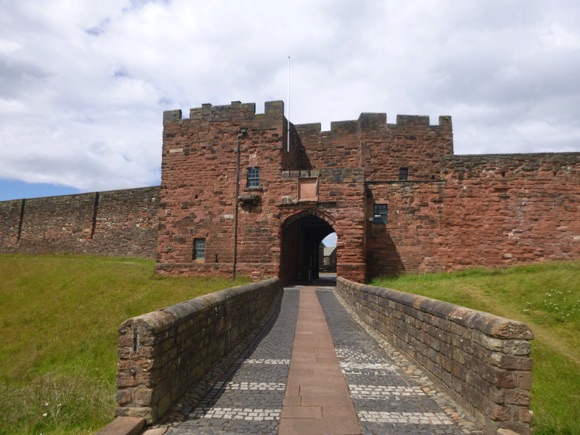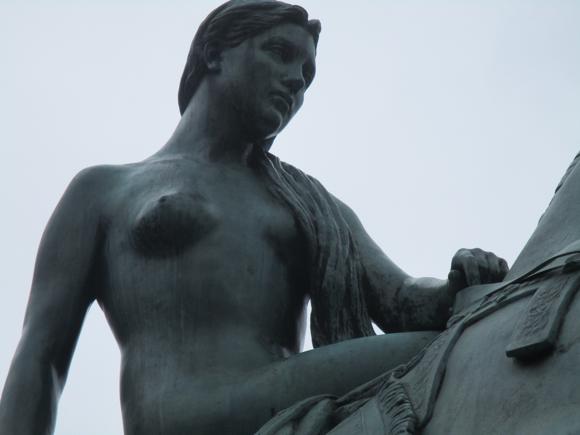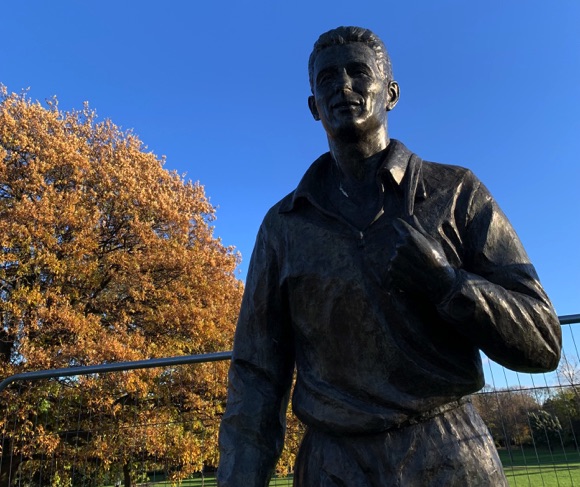Teams, tales and tips – a guide to the local game
Few other names in football evoke as much passion as Liverpool, a vibrant, idiosyncratic port city with a legendary status in the game. Recent league champions Liverpool FC were England’s most dominant until Sir Alex Ferguson’s Manchester United overtook them in the early 1990s.
A simply unique fan loyalty, grounded in the great Shankly/Beatles era of the 1960s, when The Kop was the definitive home end, has hardly wavered. As the touchstone sign in the players’ tunnel says, ‘This Is Anfield’.
And, as the song, adapted here before being adopted at almost every football ground in the world, says: You’ll Never Walk Alone. A two-decade long campaign was waged over the treatment of fans by the authorities at and after the 1989 Hillsborough disaster that caused 97 deaths. Now that at least parts of the truth have been scandalously revealed, another Liverpool touchstone rubric springs to mind: All Together Now.



Meanwhile, on the other side of Stanley Park, there have been major changes at city rivals Everton, with a major shareholder in British-Iranian businessman Farhad Moshiri bowing out, and a plan given the green light for a new stadium. Venerable Goodison Park, a World Cup 1966 venue that staged memorable games involving Brazil, Hungary and Portugal, will be consigned to history by 2025-26.
While the club’s financial plight is desperate, leading to an overall eight-point deduction in 2023-24, an unwanted Premier League first, the opening of the new stadium at Bramley-Moore Dock in 2025 will not only change the logistic at Everton, it will elevate the club to a being co-host of Euro 2028, a status not granted to their more illustrious neighbour.
The redevelopment of Anfield began with an expanded main stand unveiled in 2016-17. Then in early 2024 came the unveiling of an upper tier in the Anfield Road end, adding 7,000 to an overall capacity of 61,000.
Already, big European nights were livelier than they were in the Shankly era. Liverpool’s dramatic semi-final win over Messi’s Barcelona in 2019, reversing a 0-3 first-leg defeat, will probably go down as the most memorable since the Reds made their debut in Europe’s premier club tournament back in 1964.
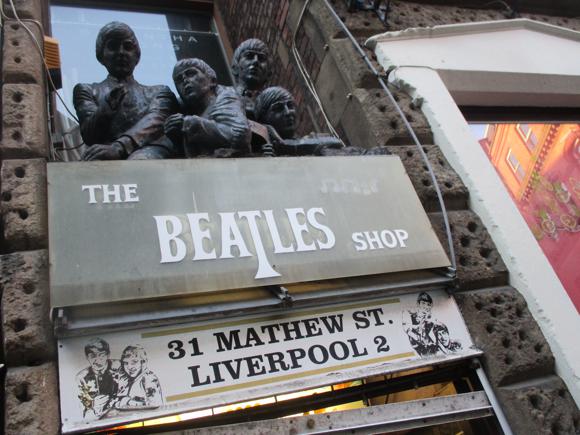


Like Manchester and Old Trafford, Liverpool attracts thousands of football tourists from around the globe, drawn as much by the legend of Anfield as by the Cavern Club and Penny Lane.
The ground came before the club. When Everton vacated Anfield in 1892, its owner, John Houlding, decided to form a club to play there: Liverpool FC. Everton moved across Stanley Park to what what would become Goodison Park.
There was more to the parting of ways than a mere dispute over rent. While later Liverpool mayor Houlding was a high-ranking Freemason and Conservative politician, Everton founder and chairman George Mahon, who took the decision to move, was a Liberal with family roots in Dublin.
The divide was more political than religious, the later perception of Liverpool being the Protestant club and Everton Catholic far milder and more nuanced than in, say, Glasgow. If any religious creed is influential in these early days, it’s Methodism – and football.
Stanley Park itself, all 45 elegant hectares of it north-east of town, had only been unveiled in 1870. It was named after Frederick Stanley, Earl of Derby, a former Governor General of Canada and a early enthusiast of ice hockey, whose major trophy also takes his name. In 1879, Everton played their first game in the south-east corner of the park, roughly where Anfield stands today.



The club had been founded the year before as St Domingo’s, tied to the Methodist church on Breckfield Road North, whose cricket team needed a sport to play in winter. Everton, named after the district on the city side of Stanley Park, duly attracted a following and the attention of local businessmen, most notably John Houlding who lived by Stanley Park.
The wealthy brewer arranged for the burgeoning club to set up on Anfield Road. Players even changed in the nearby hotel he owned, the Sandon. Also a Masonic lodge, this was where John Houlding formed Liverpool FC in 1892 and where the club’s most committed followers founded the Spirit of Shankly in 2008 to challenge LFC’s unpopular American owners.
Founder members of the Football League, Everton drew the biggest crowd of 10,000 to Anfield on the opening day of the inaugural 1888-89 season. Later that same campaign, Anfield staged its first full international, England beating Ireland 6-1. Two years later, Everton won the league, breaking Preston’s monopoly.


Within 20 years, Everton had been surpassed when Liverpool won their first title. The Merseyside derby between them had begun with LFC winning the Liverpool District Cup at their first attempt in 1893, although holders Everton signalled their contempt by fielding a reserve side, arranging for the seniors to face Scottish club Renton in a meaningless friendly. The 1-0 scoreline was nonetheless significant.
The venue was Hawthorne Road, which had hosted a number of Merseyside derbies before, none involving recently formed Liverpool, of course. Everton’s opponents were Bootle, and this ground, between Stanley Park and the docks, was their home. Formed in 1879, Bootle first played Everton at Stanley Park a year later.
Games between them, particularly in the Liverpool District Cup, attracted crowds of 3,000-plus, sometimes five figures. After winning the inaugural trophy in 1883, Bootle hired professionals from Scotland, and also applied to join the first Football League in 1888.
Rejection stung, and although Bootle became founder members of the Football Alliance, then the Second Division, Everton drew the bigger gates. Bootle continued to hire top players, most notably Andrew Watson, football’s first black international, who captained an all-conquering Scotland side.



Paying for these stars was another matter. Generously, whenever Bootle and Everton now met, their more illustrious neighbours would offer up all the gate receipts, but the dockside club folded soon after Liverpool FC arrived on the scene.
A Bootle Athletic competed briefly at Hawthorne Road between 1948 and 1953, superseded by Bootle FC. Now based at the Berry Street Garage Stadium on Vesty Road, close to Aintree Station, in 2021 BFC were promoted to the Northern Premier League Division 1 West, the highest level in England’s seventh tier.
Despite initial hostility, a shared sense of destiny would soon underscore the more familiar Merseyside rivalry we know today. When LFC founder John Houlding passed away at a well-to-do retreat near Nice in 1902, players from both sides helped carry his coffin.
From 1904 until 1935, the two clubs shared a single match programme, and for much of the post-war period, the rivals would not buy players from each other – crossing the Park is a fairly recent phenomenon.
A display at the Museum of Liverpool on the riverfront illustrates the relationship between the two clubs.



While the Beatles weren’t football fans, Paul McCartney went to see Everton win the 1966 FA Cup Final at Wembley, and the group sent a telegram of encouragement to Liverpool before the same showcase fixture the year before – although this could also have been another Bill Shankly ruse.
The 1984 League Cup Final at Wembley set the tone for later showdowns, fans of both clubs mixing and singing, repeated at the FA Cup final two years later. Another FA Cup final between them in 1989, a 3-2 extra-time win for Liverpool, was played out in the shadow of the recent Hillsborough disaster. The twice replayed FA Cup tie of 1991 proved too much for Kenny Dalglish, who resigned as Liverpool manager after the end-to-end 4-4 draw in the second game.
The FA Cup also allowed Liverpool’s third club, Tranmere Rovers, the rare opportunity to face both local rivals in swift succession. In early 2001, the side from across the Mersey in Birkenhead paid a visit to Goodison, causing a 15-minute delay to kick-off because of crowd congestion. Managed by Liverpool legend John Aldridge, Tranmere thumped Everton 3-0 and gave the Reds a scare in the quarter-final, a 4-2 victory for the eventual trophy winners.


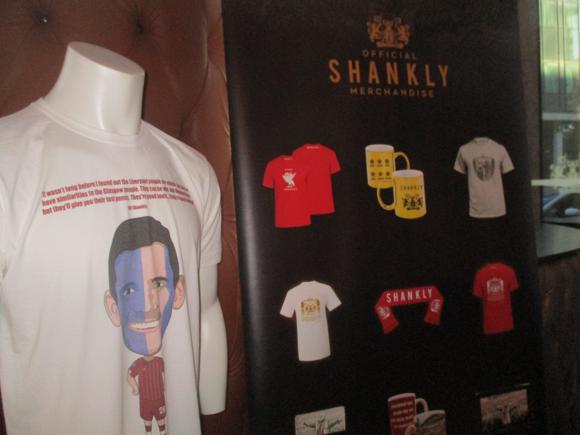
Tranmere have something of a cult status on Merseyside. Their ground, Prenton Park, became known for its floodlit games on a Friday night to allow locals to watch either Liverpool or Everton the following day. Inspiring the song Friday Night and the Gates are Low by their most famous fans, indie iconoclasts Half Man Half Biscuit, Tranmere hit the heights in the early 1990s when they reached three consecutive play-offs for a place in the Premier League.
In 2015, Rovers lost Football League status for the first time in 94 years, bouncing back to the Football League in 2018, and then to League One at the first attempt in 2019. In 2021, having fallen back down to League Two, Tranmere lost the play-off semi-final to Morecambe by the odd goal in five.
Liverpool’s fourth club, and the nation’s favourites in the darkest days of the pandemic shutdown, are Marine. Recently in the same division as up-and-coming Bootle, this venerable institution date back to 1894.
Named after a hotel that stood in this riverside district of Waterloo – itself named after a hotel, opened the year after the battle – Marine moved into their present home on Jubilee Road in 1903. Rossett Park, grandly renamed Marine Travel Arena due to sponsorship, first witnessed games in the wonderfully named I Zingari (‘The Gypsies’) league for local amateur sides, later called the Liverpool County Premier.

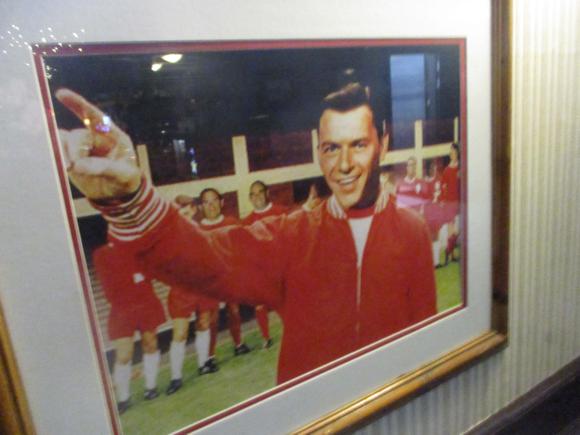

Making the FA Amateur Cup final in 1932, Marine continued to bob along in the Lancashire Combination, Cheshire County and Northern Premier leagues, football romantics and groundhoppers joining the faithful fan base most Saturdays.
An FA Cup run in 2020-21 led to a Third Round tie with Tottenham, a bumper pay day negated by an empty ground restricted by the pandemic. Selling virtual tickets, Marine more than recouped their losses, Spurs put out a full team and the TV images of frosty-breathed residents gawping at the magic of the Cup, live before their eyes, from bathroom windows and the roofs of garden sheds, remain among the most heart-warming of this terrible era.
To visit Marine, take the train from Liverpool Central to Blundellsands & Crosby (£5, every 20mins, journey time 20mins), then walk up Blundellsands Road East, right down Kenilworth Road, left at the end onto Mersey Road, right at the roundabout onto College Road. Allow 15mins. Admission is £10, £6 discounted, online and on the day.





A social club and club shop operate on match days. A semi-detached away from the ground, The Edinburgh is a classic pub from the Victorian era, its interior recarved and refitted around 1900 when nearby resident Captain Smith of Titanic fame may have been an occasional customer. Today, ‘The Bug’ is everything a local pub should be, with a vast digital jukebox to boot.
The other team to play at Rossett Park is AFC Liverpool, formed in 2008 by LFC supporters disgruntled at the cost of watching the Premier League, AFC standing for ‘Affordable Football Club’. It’s a sentiment that was echoed at Anfield itself for the Europa League quarter-final with Atalanta in April 2024, when no flags were waved on The Kop in protest against price rises of season tickets the following season.
In the meantime, the not-for-profit Little Reds continue to play North-West Counties football (Premier Division), also competing in the FA Cup, FA Trophy and Liverpool Senior Cup, losing two finals by the narrowest of margins in 2014 and 2015.








Getting Around
Arriving in town and local transport





Liverpool’s John Lennon Airport is 12km (7.5 miles) south-east of town, connected to the central bus hub of Liverpool ONE (30-35min journey time) via Liverpool South Parkway train station (10min journey time) by Airlink bus 500 (every 30mins until 6.30pm, £2.20).
A taxi should cost around £20 and take 20mins. Going from town to the airport, a decent cabbie will offer to drop you near the terminal building – thus avoiding the £2 barrier charge to go right up to the door.
Bus 80/80A and 86/86A also serve Liverpool South Parkway and Liverpool ONE, stopping at more places and taking longer – but running later. Liverpool South is handy for train links to Liverpool Central and Lime Street, plus Birmingham New Street and major cities in the north. Lime Street is the main rail terminus for hourly direct trains from London Euston (2hr 15min, £22 online). You can also change at Crewe.
Public transport consists of buses, local rail and the Mersey ferry. A Merseytravel Saveaway day pass (after 9.30am Mon-Fri, all day Sat, Sun) covering all forms starts at £3.90, available from the two main offices of Liverpool ONE and Queen Square. A pre-paid MetroCard (available at PayPoint retailers, Merseytravel centres, bus and train stations, fee £1) is replacing the Walrus smartcard, for use across all transport.
For a taxi, ComCab (0151 298 2222) are long-established.
Where to Drink
The best pubs and bars for football fans












Few cities contain as many football-focused pubs, bars and nightspots as Liverpool.
Heading towards the riverfront on James Street, The Liverpool Pub feels authentically familial with some nice touches to the décor, and live match action. With food more the focus, The Old Bank also shows games in somewhat grand surroundings. Opposite, the Captain Alexander is a barn-sized Wetherspoons.
In the same vicinity on Fenwick Street, The Slaughter House entertains regulars and tourists with live games, comedy and music. Where Brunswick Street meets The Strand, almost within sight of the Mersey, Jürgen’s Bierhaus is a must, themed after Klopp and LFC, tastefully decked out in wall-to-wall memorabilia, with videos showing and, of course, live matches.
Moving further into town, the Bierkeller is a three-bar complex at the Liverpool ONE retail and leisure complex, more promising inside than out, with three games shown on huge screens in the Bierkeller itself. On bar-lined Concert Square McCooley’s is a lively choice for sports action, original cocktails and decent Irish pub grub.









Here in the party quarter, karaoke-focused Woodys on Wood Street is a pre-club stomper, with live sport too, while further along, Yankees is a typical US-style sports bar. You’ll find the Liverpool branch of BrewDog on Colquitt Street, beside perennial party-focused cheapie, LA’GO. Pogue Mahone on Seel Street plays up its Irish credentials without neglecting live sport, while shamrock-tinged chain O’Neills is a convenient choice on Hanover Street if there’s a bunch of you.
Also close, Cheers Big Ears on Bold Street welcomes for big Premier League fixtures and allows you to keep post-match celebrations going until 3am, 4am at weekends.The Flute on Hardman Street has late weekend opening and plenty of TV sport.









The other side of Liverpool Central on Ranelagh Street, Lanigans offers an LCD video wall of match action, live music and late-spinning DJs. Pretty much the first you see when coming out of LIme Street Station, the Crown Hotel on Lime Street has long been providing sport action in an honest pub atmosphere.
Over in the nearby student quarter, on Hardman Street you’ll find Fly in the Loaf, sport action shown and sought-after beers served in historic premises. One street over, the Hope & Anchor is ideal for match watching.
Heading from the top of Dale Street, the Ship & Mitre has scores of hand-pulled ales with an adjoining outlet to take a bottle or two home. A bowl of scouse or a hand-made burger may complement your choice of brew. The Excelsior combines American craft beers with big-screen broadcasts while the Vernon Arms is an excellent choice for match watching, live music and real ales.







Further down Dale Street, tucked away on Hackins Hay, trusty Ye Hole In Ye Wall dates back to 1726, and the nearby Lady Of Mann well deserves its loyal clientele – with a great little beer garden. Alongside, Thomas Rigby’s is known for its huge range of cask ales and global brews.
Over on Tithebarn Street, The Railway is another traditional match-watching option, a few houses down from buzzy Shenanigans, where you should stake your place early at before any big match – and stick around for the live music at weekends.
Into the tourist quarter around Mathew Street and Beatles paraphernalia, The Grapes was one of the band’s favoured haunts, its wonderful vinyl jukebox providing funds for a homeless charity. Three-floor, football-friendly Flanagan’s Apple is another age-old Irish favourite and the William Gladstone by the Cavern Club packs for big games. Legends is a pure sports bar, right on Mathew Street.
Where to stay
The best hotels for the grounds and around town









Visit Liverpool has a hotel database. Note that rates often rise for the weekend of the Grand National in April.
Convenient for Anfield a few hundred yards away are six guesthouses along Anfield Road. The Soccer Suite, Hotel Anfield, Epstein Guest House, The Anfield B&B, the Stanley Park Hotel and Hotel Tia offer varying degrees of comfort, convenience and affiliation to football and/or the Fab Four. While the six-room Soccer Suite has a smart, post-match bar with a wide-screen TV, the Hotel Anfield has boutique touches in its eight rooms, all with flat-screen TVs, plus there’s tasteful football iconography in the dining room. The Tia has match hospitality packages plus a bar and garden. There are also rooms at the nearby King Harry Bar, which has six extremely cheap rooms with bunk beds above a pre-/post-match pub.
On the other side of the ground on Oakfield Road, the Sandon Hotel where LFC were founded has guestrooms along with an always popular pre-match bar. Facing it, across Houlding Street, the Klopp Guest Rooms (07469 927086) is a capsule hotel currently undergoing a few changes – hopefully not to the wonderful mural.



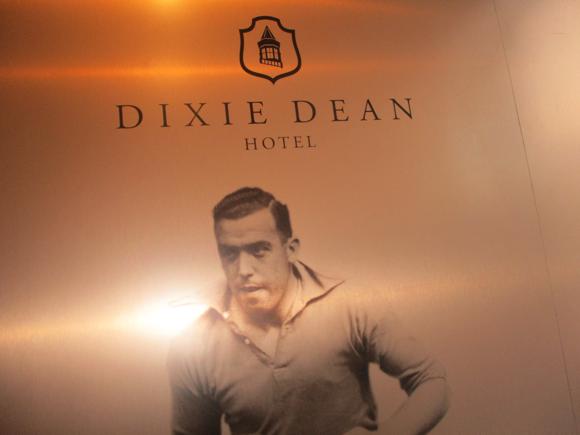


In town, The Shankly Hotel on Victoria Street carries its legendary theme in its Bastion Bar & Restaurant, decorated with rare memorabilia relating to the great man. Similarly upscale, expansive rooms and studios appeal to the discerning, moneyed visitor, while the hotel can link up with Shankly-themed tours of the city. Opposite, the boutiquey Dixie Dean Hotel is themed after another local football legend, obviously an Evertonian one, including the No.9 Bar & Restaurant. Blue is the signature colour throughout.
If you’re going to open a Beatles hotel, you may as well do it round the corner from the Cavern Club. The Hard Days Night Hotel comprises 110 guestrooms in a classic Victorian building and offers packages of weekend stays for two and passes to various Beatles attractions around town. You’ll also find McCartney’s Bar and its seven HD screens for sport at the more affordable Hanover Hotel on Hanover Street.










Within the iconic Royal Liver Insurance Building itself, Aloft Liverpool offers great views from many of its 116 rooms. Close to Liverpool Central Station, the funky Printworks Hotel consists of 33 contemporary rooms of varying configurations, all with power showers and flat-screen TVs. It has separate apartments, too.
It sits near the the famous Adelphi, a fin-de-siècle beauty near Lime Street station which has seen better days – but it’s worth a look in. Online rates are a steal, if contemporary comforts aren’t a priority. The other side of the station, the mid-range Liner Hotel echoes Liverpool’s maritime past.
For a real luxury apart-hotel stay, the Richmond on Hatton Garden goes that extra yard to keep high-spending guests happy – its brasserie is a top dining destination in its own right. The four-star boutique Hotel Indigo contains the Steakhouse Bar & Grill Liverpool, overseen by Michelin-starred chef Marco Pierre White.
If you’re just after a simple room with few frills and enjoy a decent breakfast, then the Aachen on Mount Pleasant is ideal. Also budget and close to the Beatles Quarter, easyHotel Liverpool City Centre on Castle Street has location in its favour.






Another great budget option is the Travelodge Liverpool Central Exchange Street, convenient for town and waterfront, as well as its nearby sister three-star, the Travelodge Liverpool Central on Old Haymarket, and another stablemate on The Strand, close to James Street station.
Chains abound. Close to each other by the waterfront, with memorable views of the Mersey, the Crowne Plaza has a spa and brasserie while the sumptuous Malmaison is the first purpose-built example of this sought-after nationwide chain.
Close to Albert Dock, the Hilton Liverpool City Centre is suitably business-like, as is the Marriott, nearer Lime Street. Just off Dale Street, the DoubleTree By Hilton has the best spa in town, all set in an elegant 19th-century building.



















